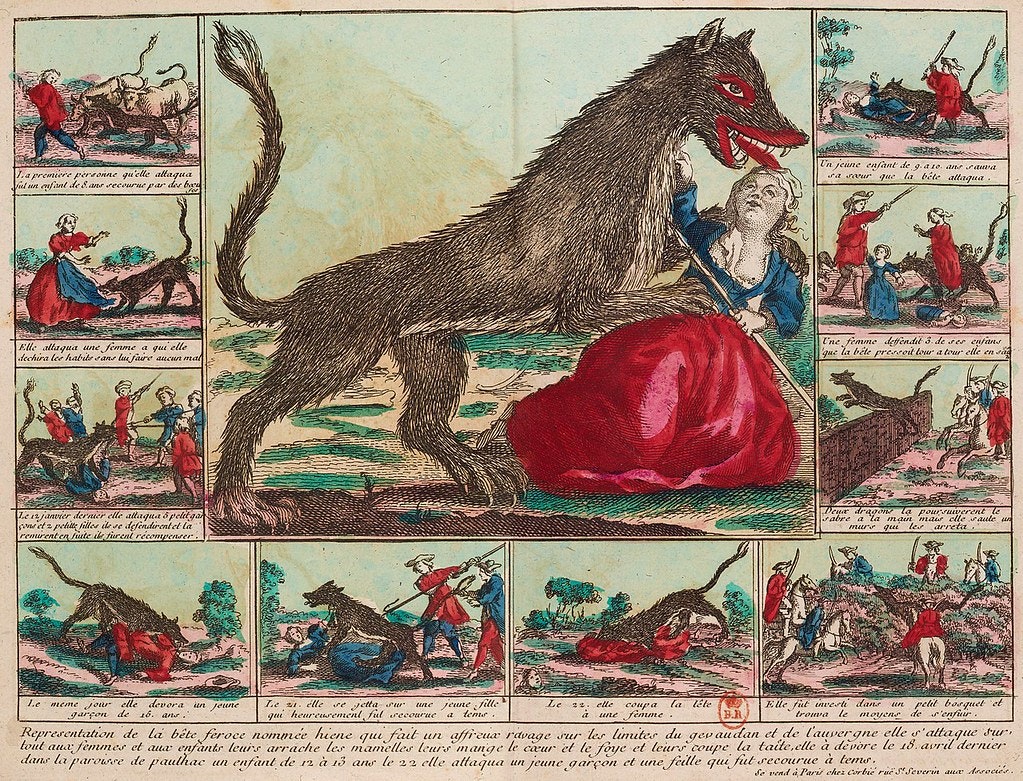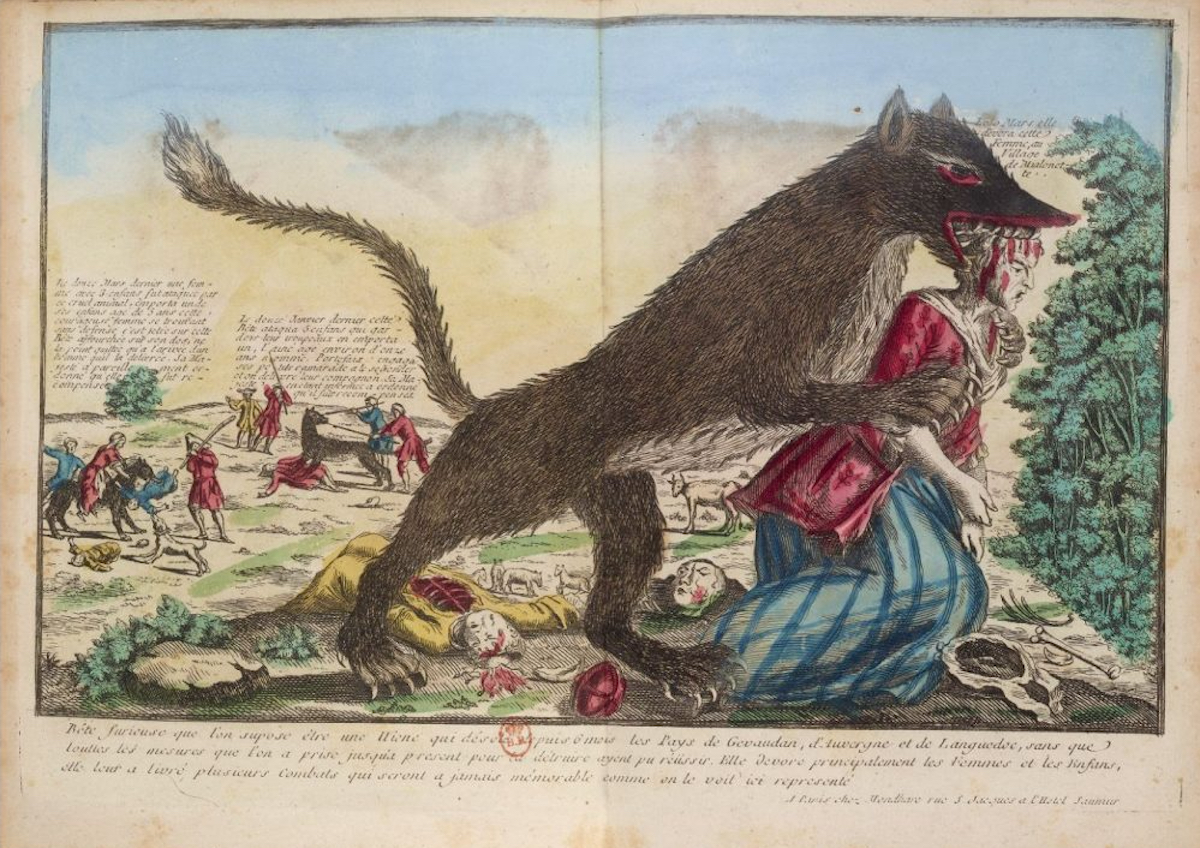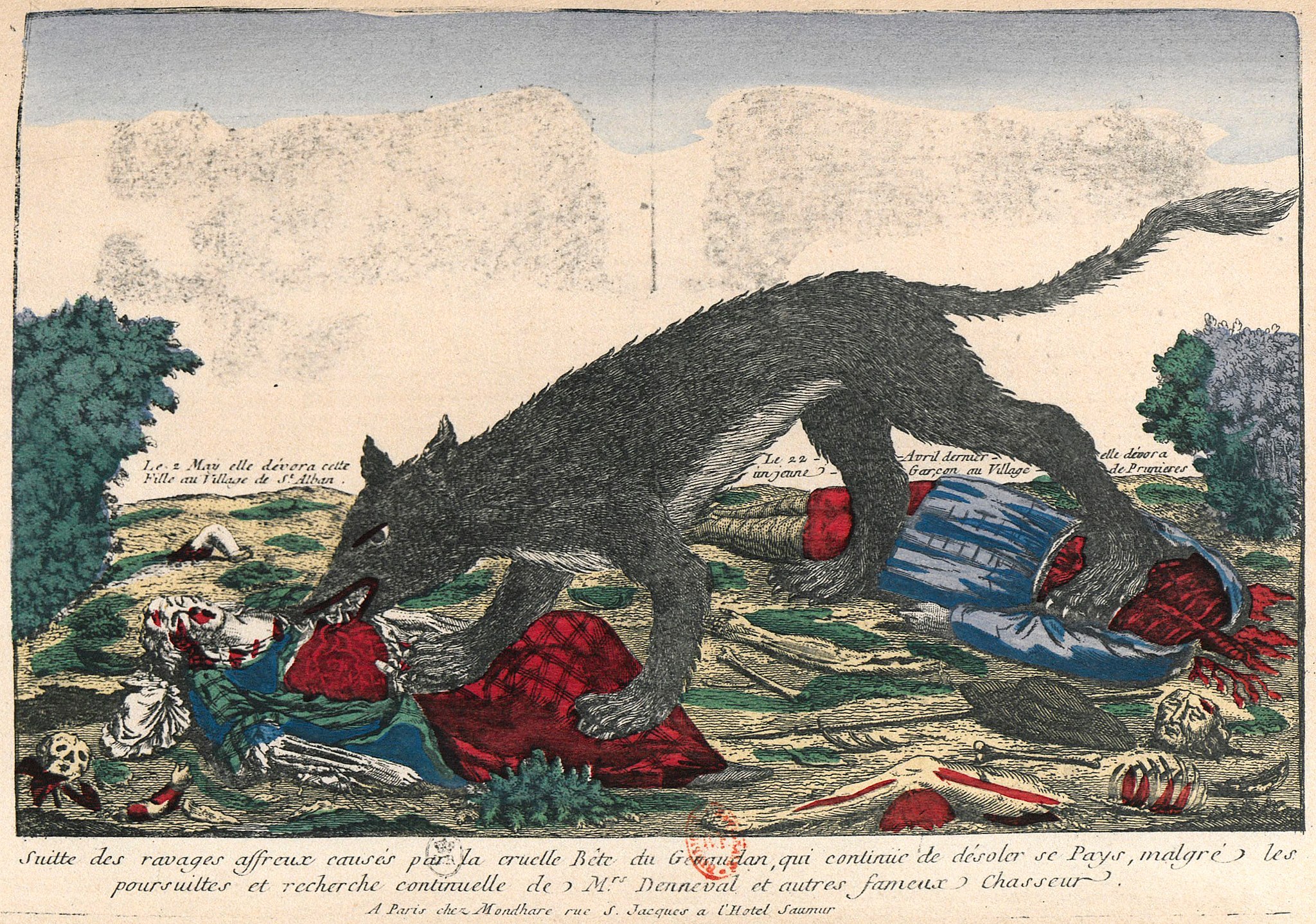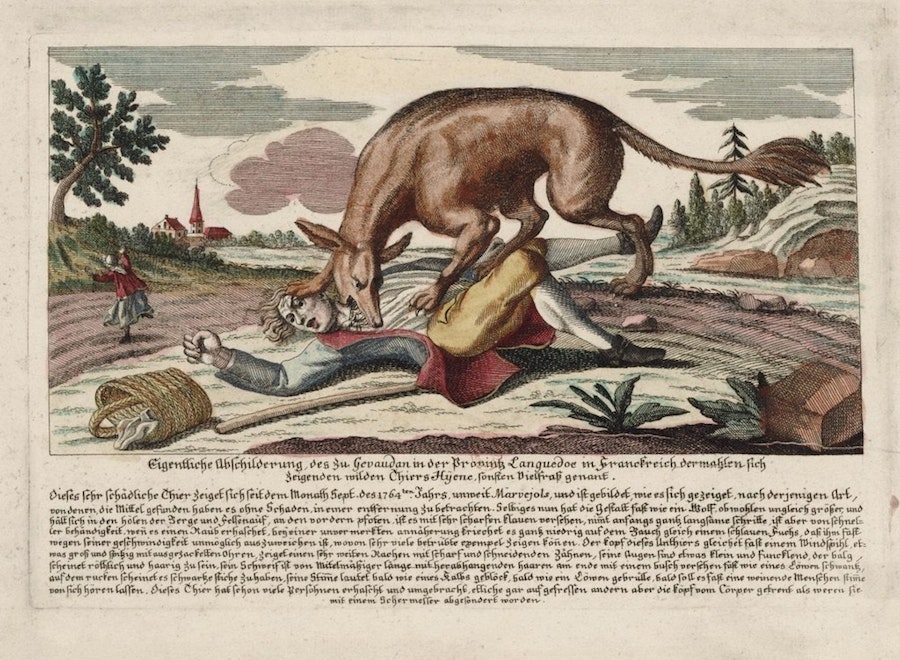
If you’ve studied French (or, indeed, been French) in the past couple of decades, you may well have played the card game Les Loups-garous de Thiercelieux. Known in English as The Werewolves of Millers Hollow, it casts its players as hunters, thieves, seers, and other types of rural villagers in the distant past. By night, some players also happen to be werewolves, liable to devour the others in their sleep. Though such beings may never actually have existed, they loom fairly large in French popular culture still today — not least, perhaps, because they loomed even larger two and a half centuries ago, such that history now acknowledges a period called the French Werewolf Epidemic.

“In the 1760s, nearly three hundred people were killed in a remote region of south-central France called the Gévaudan (today part of the département of Lozère),” says the Public Domain Review. “The killer was thought to be a huge animal, which came to be known simply as ‘the Beast’; but while the creature’s name remained simple, its reputation soon grew extremely complex.”
In the press, which speculated on this fearsome creature’s preferred methods of attack (decapitation, blood-drinking, etc.), “illustrators had a field day representing the Beast, whose appearance was reported to be so monstrous it beggared belief.”

By the winter of 1764–65, “the attacks in the Gévaudan had created a national fervor, to the point that King Louis XV intervened, offering a reward equal to what most men would have earned in a year.” In September of 1756, a lieutenant named François Antoine “shot the enormous ‘Wolf of Chazes,’ which was stuffed and put on display in Versailles.” This didn’t stop the killings, but “by now the Royal Court had lost interest. The story had played itself out, and public attention had moved on to other matters. Luckily a local nobleman, the Marquis d’Apcher, organized another hunt, and in June 1767 the hunter Jean Chastel laid low the last of what had turned out to be the Beasts of the Gévaudan.”

“The Beast’s stomach was filled with human remains and, by all posthumous accounts, did not look anything like a typical wolf,” says Dangerous Minds. “They were also able to ascertain that the animal was solely responsible for 95% of the attacks on humans from 1764 to 1767.” As to what the animal actually was, theories abound: maybe an unusually large or rabid wolf, maybe a hyena, maybe even a lion. As for the more fantastical theories that captured the public imagination of the time, they may have passed into the realm of myth, but those myths continue to inspire literature, film, television, and games. And as anyone who’s played Les Loups-garous de Thiercelieux a few times understands, the werewolf’s luck usually runs out.
Related content:
The Sights & Sounds of 18th Century Paris Get Recreated with 3D Audio and Animation
A 1665 Advertisement Promises a “Famous and Effectual” Cure for the Great Plague
How the Year 2440 Was Imagined in a 1771 French Sci-Fi Novel
Based in Seoul, Colin Marshall writes and broadcasts on cities, language, and culture. His projects include the Substack newsletter Books on Cities and the book The Stateless City: a Walk through 21st-Century Los Angeles. Follow him on Twitter at @colinmarshall or on Facebook.


Leave a Reply